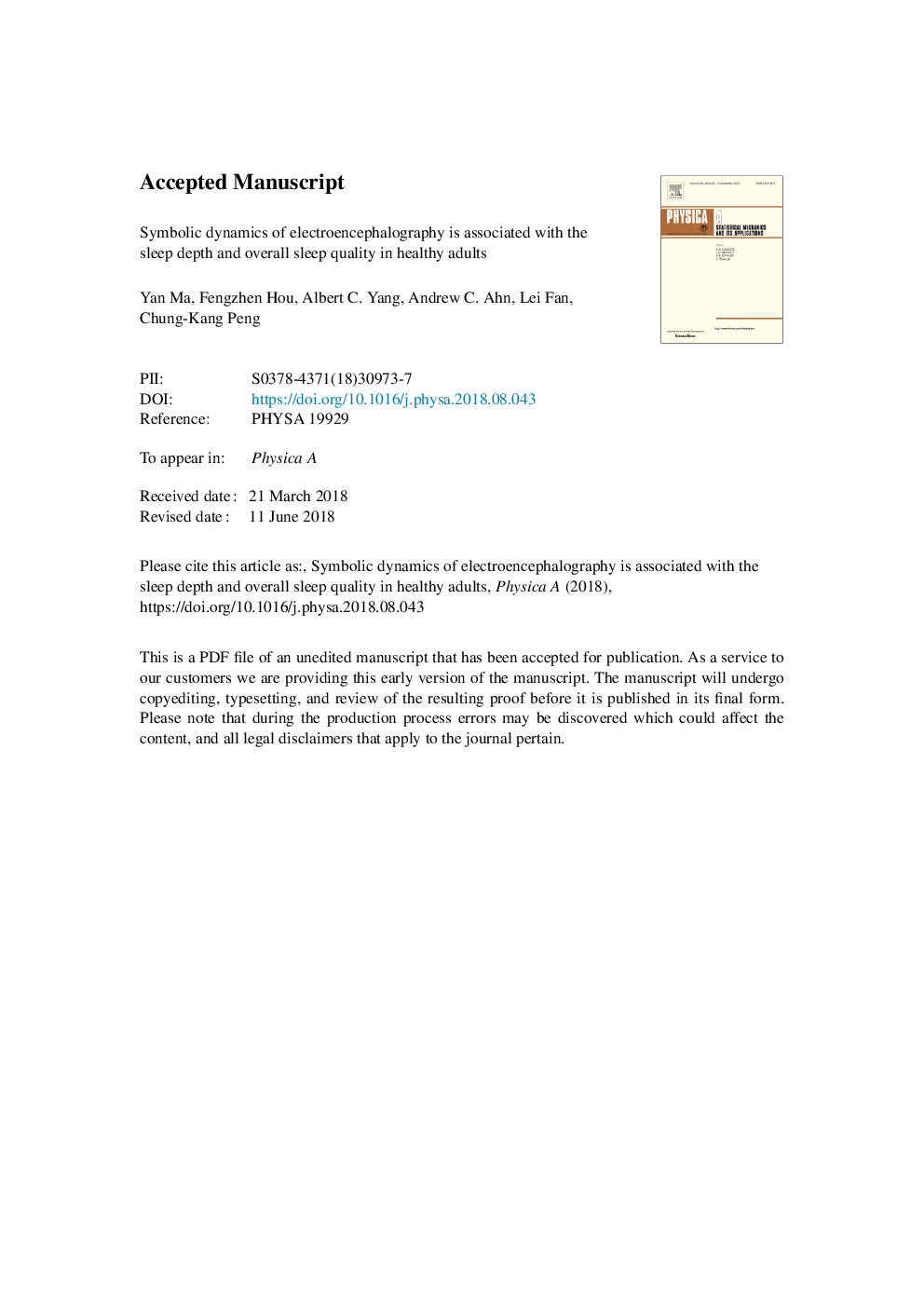| Article ID | Journal | Published Year | Pages | File Type |
|---|---|---|---|---|
| 8954632 | Physica A: Statistical Mechanics and its Applications | 2019 | 21 Pages |
Abstract
Sleep electroencephalographic (EEG) provides the opportunity to study sleep scientifically. Slow wave activity (SWA), presenting EEG spectral power in the low-frequency range, has proven to be a useful parameter in sleep medicine. Drawing inspiration from the adaptive and noise-assist features of symbolic dynamics, we introduced a symbolic analogue of SWA as EEG signal was generally considered as non-linear and non-stationary. Moreover, we investigated whether the proposed metrics can capture patterns that characterize and differentiate different sleep stages, and whether EEG dynamical features during the wake to sleep transition after light-off share a correlation with the overall sleep quality during the whole night. Single-channel EEGs derived from the polysomnography (PSG) of 111 healthy adults in the Sleep Heart Health Study were analyzed retrospectively. Every 30-second epoch of EEG data was transformed into a symbolic sequence using equiprobable symbolization and then the percentage of constant word (PCW) was calculated. The results revealed that the proposed metric, PCW, exhibits a correlation with wake/sleep stages over the night. More importantly, average PCW in short sections (15-60Â min) at the beginning of the night shows a correlation with various indices of sleep quality for the entire night, suggesting PCW as a potential indicator for the requirement for an early sleep intervention. In conclusion, the results validate the use of symbolic dynamics in automatic sleep scoring and evaluation, and might further expand the application of SWA measurement to the early intervention of sleep disorders.
Related Topics
Physical Sciences and Engineering
Mathematics
Mathematical Physics
Authors
Yan Ma, Fengzhen Hou, Albert C. Yang, Andrew C. Ahn, Lei Fan, Chung-Kang Peng,
